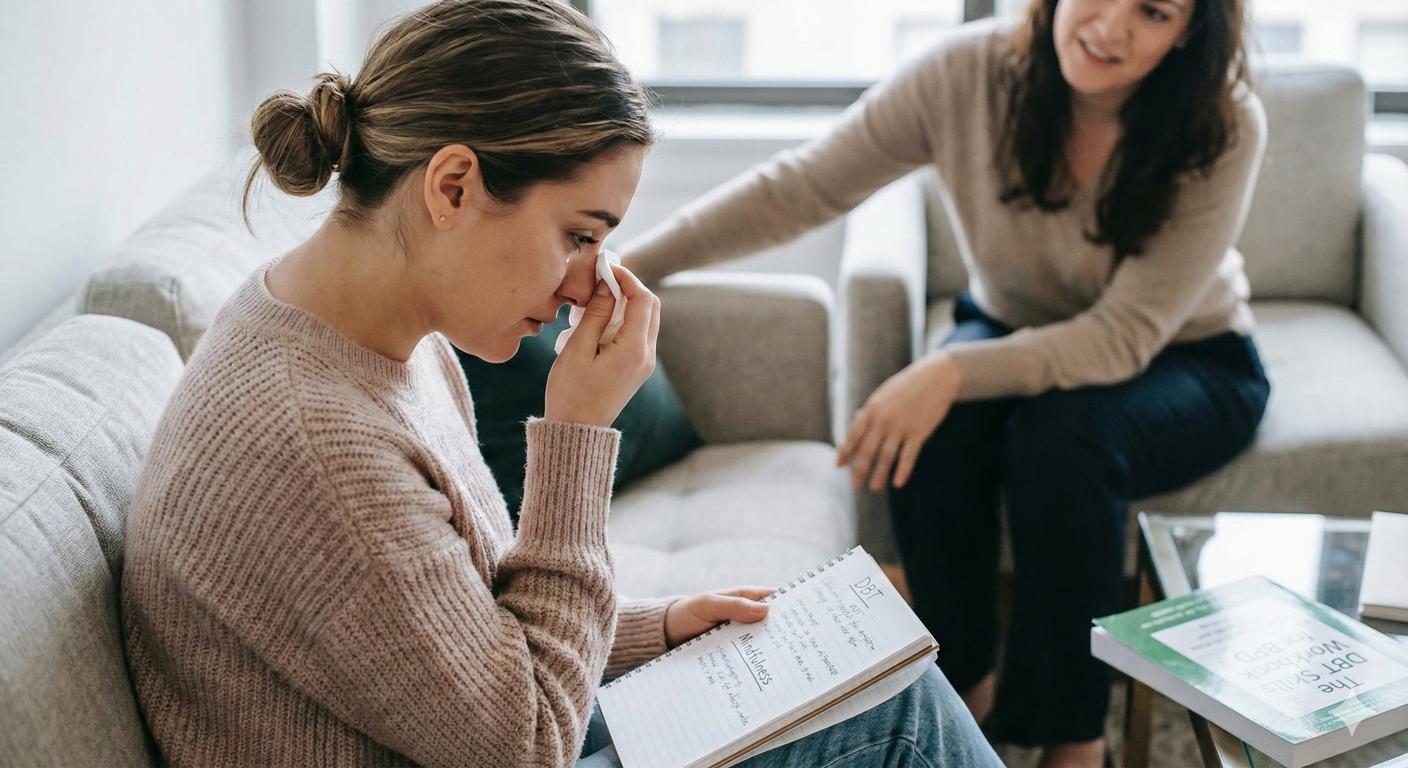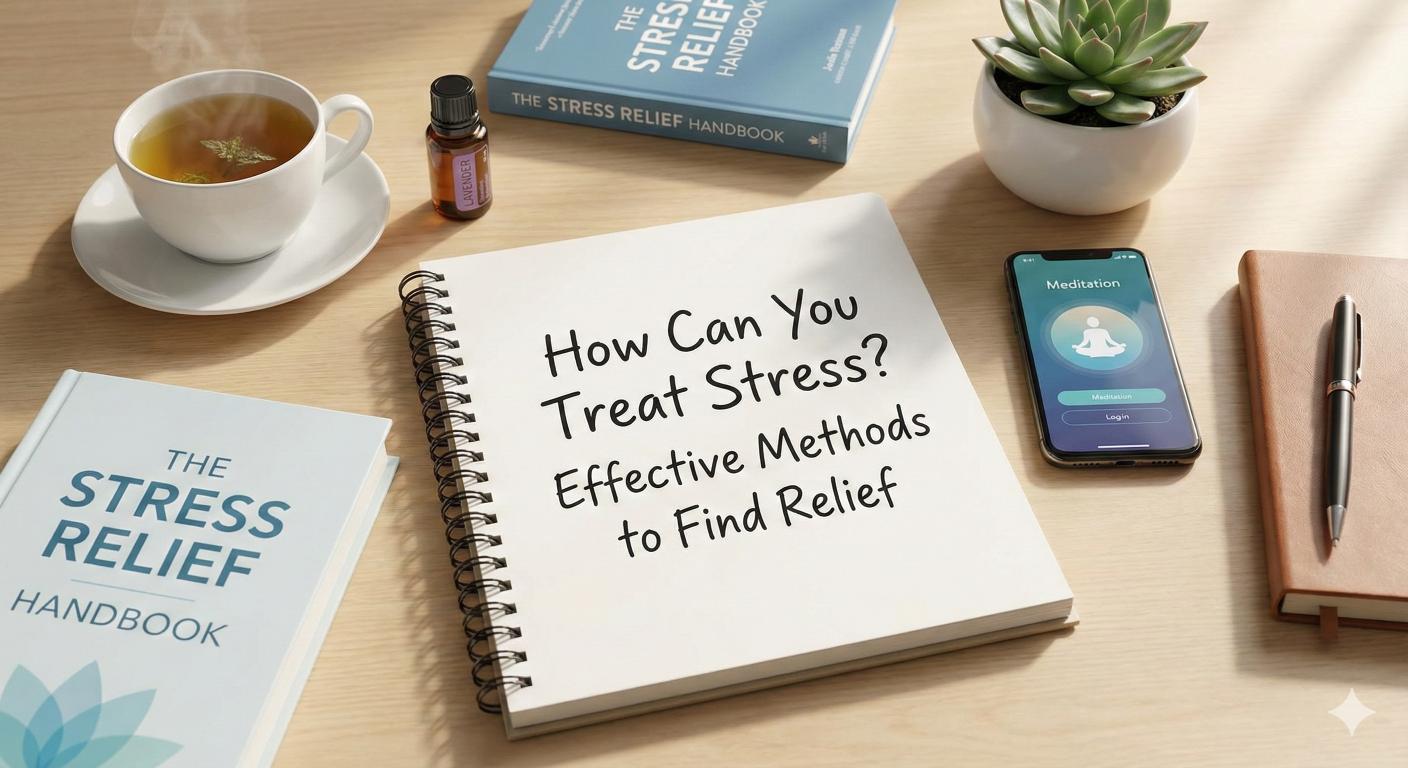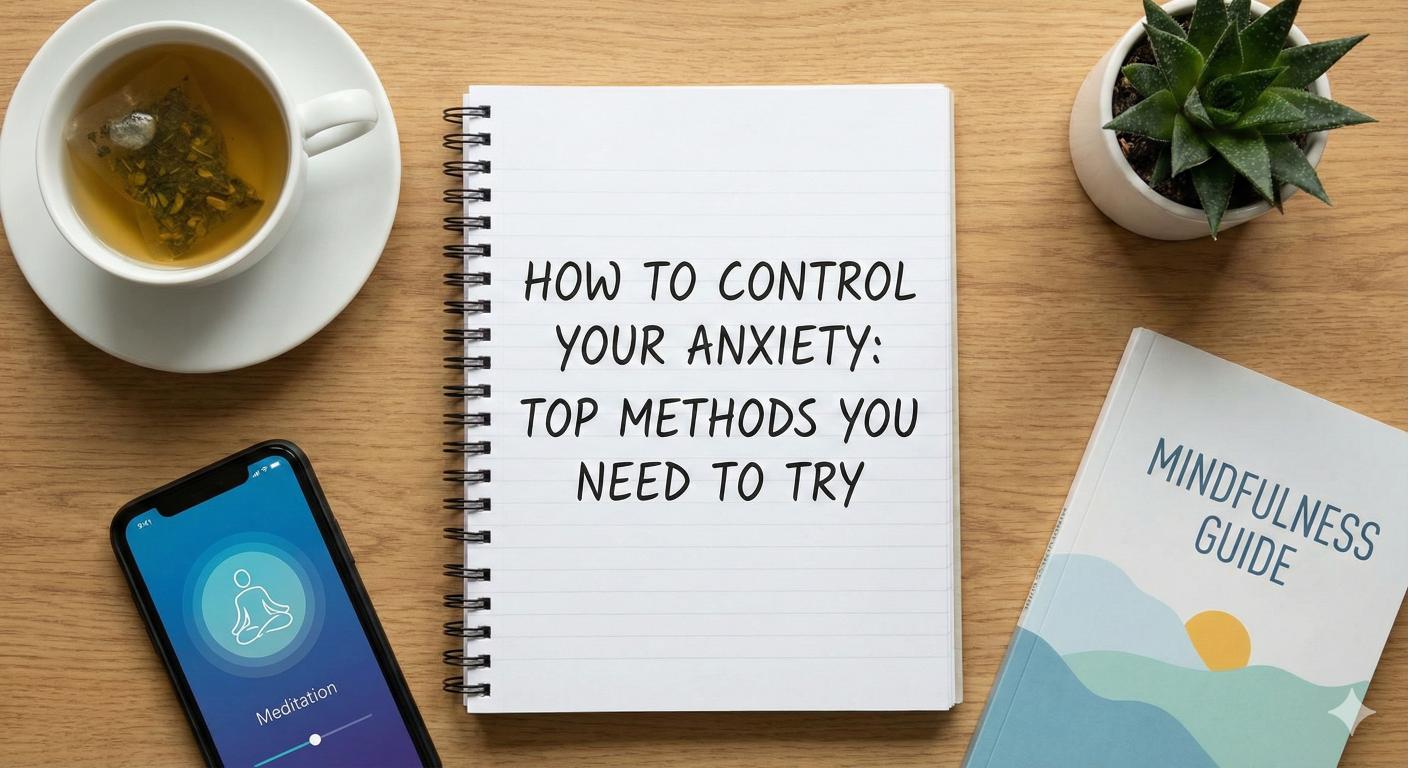Proven Techniques for Managing Chronic Worry
Discover effective techniques for managing chronic worry and reclaim your peace of mind today!


Managing Chronic Worry
Understanding Generalized Anxiety Disorder (GAD)
Generalized Anxiety Disorder (GAD) is characterized by persistent feelings of anxiety or dread that significantly interfere with daily life. It is more commonly diagnosed in women than men and typically begins around age 30, although it can manifest in childhood as well. Individuals experiencing GAD may worry excessively about everyday issues, and this worry often leads to physical symptoms such as pain, fatigue, or shortness of breath. Symptoms may fluctuate and worsen during stressful periods.
Those with GAD often embody worries that shift from one concern to another. This ongoing cycle of anxiety can lead to significant distress across various areas of life. Recognizing and understanding GAD is crucial for effective management and treatment.
Factors Contributing to GAD
Several factors can contribute to the development of GAD. Genetic predisposition plays a significant role; individuals with a family history of anxiety disorders are at a higher risk. Additionally, external factors such as traumatic experiences or chronic stress can further elevate the likelihood of developing GAD.
Contributing FactorsDescriptionGenetic FactorsFamily history of anxiety disorders increases risk.Environmental StressTraumatic events or ongoing stressors can trigger symptoms.Psychological FactorsIndividual coping mechanisms and temperament may influence anxiety levels.Biological FactorsDifferences in brain chemistry and function can contribute.
Understanding these contributing factors can aid in identifying individuals at risk for GAD and implementing appropriate interventions. Early intervention is critical, as untreated anxiety can worsen over time, making it important to seek help before the condition escalates. For strategies on recognizing anxiety triggers, visit our article on anxiety triggers: identifying and managing them.

Treatment Approaches
When managing chronic worry, various treatment methods can significantly assist individuals struggling with Generalized Anxiety Disorder (GAD). This section discusses psychotherapy, medication options, and integrative approaches that can provide relief from anxiety symptoms.
Psychotherapy for GAD
Psychotherapy plays a crucial role in treating GAD. Cognitive Behavioral Therapy (CBT) is a widely recognized and effective form of psychotherapy. CBT helps individuals identify and challenge negative thought patterns and behaviors associated with anxiety. Studies indicate that individuals who underwent CBT reported reduced anxiety symptoms even a year post-treatment [3].
Beyond CBT, Acceptance and Commitment Therapy (ACT) is another effective therapeutic method. Research has shown that ACT offers significant benefits for those suffering from anxiety since studies dating back to the 1980s have highlighted its effectiveness [3].
Therapy TypeEffectivenessCognitive Behavioral TherapyReduces anxiety long-termAcceptance and Commitment TherapyProven effective since 1980s
Medication Options for GAD
Pharmacological treatment for GAD often includes various types of medications. Commonly prescribed options include Selective Serotonin Reuptake Inhibitors (SSRIs), Serotonin Norepinephrine Reuptake Inhibitors (SNRIs), and benzodiazepines. Buspirone is another medication frequently used for anxiety. Medication can require time to show effects, and it may involve trying different options to find the most suitable fit for each individual [1].
Medication TypeDescriptionTypical Use FormatSSRIsAntidepressants that increase serotonin levelsDaily oral tabletsSNRIsAntidepressants that affect serotonin and norepinephrineDaily oral tabletsBenzodiazepinesFast-acting anxiety relieversAs needed; short-term useBuspironeNon-benzodiazepine for chronic anxietyDaily oral tablets
Integrative Approaches for GAD
Integrative approaches combine conventional treatments with holistic methods to enhance anxiety management. Healthy lifestyle practices such as exercise, mindfulness, and meditation can be effective when used alongside psychotherapy and medication.
Mindfulness-based therapies, notably Mindfulness-Based Cognitive Therapy (MBCT), have shown to be beneficial in alleviating anxiety, supported by more than 200 studies. These therapies focus on enhancing present-moment awareness and reducing excessive worrying.
Utilizing an integrative approach in managing anxiety can enable individuals to experience better coping mechanisms, reducing their reliance solely on medication or psychotherapy. For further information on identifying stressors in life, read about anxiety triggers: identifying and managing them and building resilience against anxiety.

Coping Strategies
Managing chronic worry involves adopting coping strategies that integrate lifestyle modifications, cognitive techniques, and mindfulness practices. Each of these approaches can contribute to a more effective management of anxiety symptoms.
Lifestyle Modifications for Anxiety
Healthy lifestyle practices can significantly improve anxiety management. Incorporating techniques such as regular exercise, mindfulness, and stress management can alleviate anxiety symptoms when paired with standard care like psychotherapy and medication.
Lifestyle ModificationImpact on AnxietyRegular ExerciseReduces overall stress and improves moodHealthy DietSupports better emotional well-beingSufficient SleepEnhances cognitive function and resilienceSocial SupportProvides emotional comfort and reduces feelings of isolation
For those interested in understanding how diet affects anxiety levels, consider exploring the connection between diet and anxiety levels.
Cognitive Behavioral Techniques
Cognitive Behavioral Therapy (CBT) has been shown to effectively help individuals manage anxiety symptoms. Those who engaged in CBT often reported reduced anxiety levels even one year after treatment. This technique emphasizes the importance of identifying and challenging negative thought patterns.
Some key principles of CBT include:
For additional support strategies, you may explore building resilience against anxiety.
Mindfulness Practices
Mindfulness practices have been supported by over 200 studies as effective in alleviating anxiety symptoms. Techniques such as Mindfulness-Based Cognitive Therapy (MBCT) and Acceptance and Commitment Therapy (ACT) are particularly beneficial in managing anxiety [3]. These methods promote awareness of the present moment and acceptance of one’s thoughts and feelings without judgment.
Common mindfulness techniques include:
Incorporating mindfulness into daily life can offer tools for maintaining calmness and reducing anxiety during challenging situations. For strategies on managing anxiety during significant life changes, refer to coping with anxiety during major life changes.
Utilizing these coping strategies can foster a greater sense of control and resilience against anxiety, ultimately aiding in managing chronic worry effectively.
Proactive Measures
Managing chronic worry involves adopting proactive measures to distinguish between different types of worries, utilizing therapy techniques, and applying exposure therapy.
Recognizing Productive vs. Unproductive Worries
Worries can be categorized into two distinct types: productive and unproductive. Productive worries are those that involve actionable items, such as making reservations for a trip. These concerns prompt individuals to take tangible steps toward resolution. Conversely, unproductive worries encompass an endless cycle of "what if" scenarios, which are typically beyond the individual's control. Recognizing the difference between these two forms of worry is essential for effective management. Addressing productive worries can lead to constructive outcomes, while reducing the time spent on unproductive thoughts may alleviate anxiety [4].
Type of WorryDescriptionActionProductiveActionable concerns (e.g., making a plan)Take steps to resolveUnproductiveSpeculative fears (e.g., "What if I fail?")Limit rumination
Exposure Therapy for Anxiety
Exposure therapy is a form of cognitive behavioral therapy that involves systematically confronting fears in a controlled environment. This technique helps reduce the impact of those fears through repeated exposure. For example, individuals may repeatedly acknowledge a fear, such as dying of cancer. Over time, this acknowledgment can lessen the emotion tied to the fear [4]. By engaging in gradual exposure to feared situations, individuals learn to manage and diminish anxiety levels effectively.
Exposure ScenarioInitial ReactionLong-term ResultAcknowledging fear of public speakingHigh anxietyReduced apprehension over timeDiscussing fears about healthIntense worryGreater ease in handling health discussions
Importance of Talk Therapy
Talk therapy is a critical component in managing chronic worry, as it allows individuals to explore their feelings in a supportive environment. It encourages discussion around personal experiences that contribute to anxiety, helping individuals address root issues. In combination with cognitive behavioral therapy, talk therapy can provide the tools needed to lessen worry and enhance coping strategies [4]. Regular sessions with a licensed therapist can create a safe space for expressing concerns, leading to greater insights and emotional resilience.
By incorporating these proactive measures into their lives, individuals can work towards effectively managing chronic worry, improving their overall well-being, and gaining greater control over their anxious thoughts. For further support and techniques, consider exploring resources on building resilience against anxiety or coping with anxiety during major life changes.
Physical Activity and Anxiety
Engaging in physical activity can play a significant role in managing chronic worry. Regular exercise has been shown to alleviate symptoms of anxiety and improve overall mental health.
Impact of Exercise on Anxiety
Consistent engagement in physical activities, whether general exercise or specific routines, can greatly help ease chronic anxiety. Research indicates that even a single bout of exercise can reduce anxiety levels when they arise. Various types of exercise, from tai chi to high-intensity interval training, have demonstrated effectiveness in alleviating anxious feelings [5].
The benefits of exercise include increased endorphin release, which is known as the "feel-good" hormone. Regular physical activity also promotes better sleep, which is often disturbed by anxiety. A meta-analysis found that individuals with anxiety disorders who engage in high levels of physical activity are better protected against developing anxiety symptoms compared to those with low activity levels.
Physical Activities for Anxiety Relief
Individuals can choose from a wide range of activities to help reduce anxiety. Here are some effective options:
Activity TypeDescriptionBenefitsAerobic ExerciseActivities like running, swimming, or cyclingIncreases heart rate, boosts endorphinsYoga and Tai ChiMindfulness practices incorporating movementReduces stress, enhances relaxationStrength TrainingWeight lifting or resistance exercisesBuilds strength, improves self-esteemDanceGroup classes or individual dancingEnjoyable, promotes social interactionWalkingSimple brisk walks outdoors or indoorsAccessible, boosts mood
Finding an enjoyable activity can enhance commitment and motivation to engage in regular exercise. For more information on managing anxiety, check out how exercise can alleviate anxious feelings.
Consistency in Physical Engagement
Maintaining a regular routine is essential for experiencing the full benefits of physical activity. Many individuals with anxiety tend to be more sedentary and may resist intense forms of physical activity. This increase in inactivity can heighten the risk of other psychiatric disorders, including depression and cardiovascular problems [5].
Incorporating physical activity into daily life can be done gradually, starting with short sessions and slowly increasing duration and intensity. Additionally, combining physical activity with other lifestyle changes can provide further assistance in managing anxiety disorders. Even for those who may still require psychotherapy or medication, lifestyle modifications can contribute to effective anxiety management [6].
By embracing regular physical activity, individuals can create a proactive approach to tackling their anxiety, leading to improved mental well-being and enhanced quality of life.
Lifestyle Modifications for Anxiety Management
Making adjustments to daily habits and routines can play a significant role in managing chronic worry and anxiety. This section explores the crucial elements of diet and exercise, holistic approaches, and patient-centric lifestyle medicine.
Role of Diet and Exercise
Diet and physical activity are integral components of managing anxiety. Research has established that healthy eating patterns and consistent exercise can help alleviate anxiety symptoms and enhance overall well-being. Implementing dietary changes can lead to improvements not just in physical health but also in mental resilience.
Dietary StrategyBenefitsFruits and VegetablesHigh in vitamins, minerals, and antioxidants that support brain health.Whole GrainsPromote steady energy levels and regulate blood sugar.Lean ProteinsNecessary for neurotransmitter function, supporting mood stability.Regular ExerciseEngages endorphins and can lower anxiety levels significantly. (How exercise can alleviate anxious feelings)
Lifestyle interventions, including healthy nutrition and physical movement, have shown potential to lower blood pressure, improve lipid profiles, and reduce the prevalence of chronic diseases [7].
Holistic Approaches to Anxiety
Holistic approaches to anxiety management incorporate multiple facets of wellness, emphasizing a balance between the body, mind, and environment. These strategies can include stress management techniques, relaxation exercises, and community support systems.
Key holistic methods include:
Utilizing these holistic interventions can significantly enhance the effectiveness of anxiety treatments, as they address both psychological and physical health needs.
Patient-Centric Lifestyle Medicine
Patient-centric lifestyle medicine focuses on tailoring intervention strategies to the specific needs of individuals. This approach recognizes the critical role of lifestyle factors such as nutrition, exercise, sleep, stress management, and social interactions. Effective management demands collaboration among healthcare providers, patients, and communities, leading to a comprehensive care strategy.
Integrating evidence-based lifestyle changes into medical care has proven effective in mitigating symptoms associated with anxiety. For example, combining dietary counseling with physical activity can foster better emotional outcomes.
By adopting a holistic and patient-focused attitude towards lifestyle modifications, individuals can empower themselves to manage chronic worry effectively. For further insights into reducing anxiety symptoms, explore our resources on dealing with nervousness in social settings, anxiety triggers: identifying and managing them, and calming techniques for anxious moments.
References
[2]:
[3]:
[4]:
[5]:
[6]:
[7]:
More Resources
A team ready to start your journey.
Get in touch — today.
We are a safe space – a haven for exceptional individuals to receive discreet, personalized, in-person treatment and care.
.avif)










